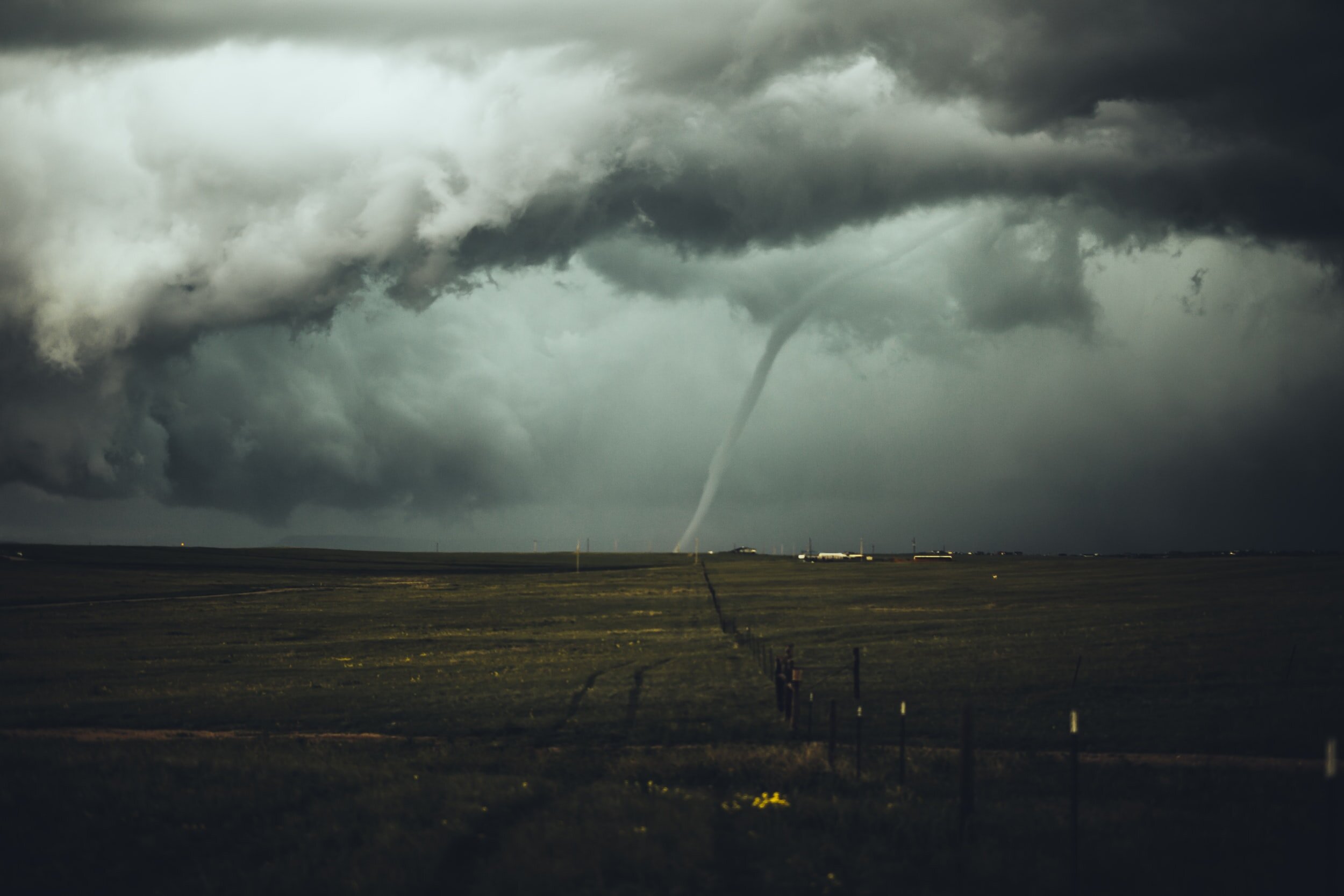
Are You Prepared?
KACPOA Disaster Plan
Rockport CodeRED Emergency Alerts
Spectrumam.com
Texas Emergency Management

As we all know disasters can be big and small. A hurricane, community fire or catastrophic weather event. As each of these has affected many of us here on the island and beyond we try to learn from every event and work together to be prepared to support our community and neighbors. Below are some resources to help guide you in many events that might arise. We cannot control Mother Nature, but we can attempt to be prepared, working neighbor to neighbor to insure we are establishing a safe environment here on the island. Let us know if we can help support you in the event of an emergency on the island by filling out the form below.
Family Hurricane Preparedness
Disaster can strike quickly and without warning. It can force you to evacuate your neighborhood or confine you to your home. What would you do if basic services--water, gas, electricity or telephones-were cut off? Local officials and relief workers will be on the scene after a disaster, but they cannot reach everyone right away. Where will your family be when disaster strikes? They could be anywhere--at work, at school or in the car. How will you find each other? Will you know if your children are safe?
Families can and do cope with disaster by preparing in advance and working together as a team. Follow the steps listed here and on this website. Knowing what to do is your responsibility and your best protection.
Basic Preparation Tips
Know where to go. If you are ordered to evacuate, know the local hurricane evacuation route(s) to take and have a plan for where you can stay. Contact your local emergency management agency for more information. Fuel vehicles in advance.
Put together your Disaster Supply Kit. We’ve created a resource for you.
Critical Documents
Take all Critical Documents if you need to evacuate. Click the link below for a helpful list.
If You Decide NOT To Evacuate
*** FIRST, PLEASE NOTE WE ENCOURAGE HOMEOWNERS TO FOLLOW EVALUATION PROTICAL FROM THE CITY.
If your advised to evacuate, and you decide to stay in your home, keep adequate supplies on hand in case of the loss of power.
Bottled water is key for several days if you are not able to leave your home due to flooding or blocked roads.
Create a family emergency communication plan.
Many communities have text or email alerting systems for emergency notifications. To find out what alerts are available in your area, search the Internet with your town, city, or county name and the word “alerts.”
Review insurance policies (coverage and deductibles).
If you have pets, don’t forget any supplies including crates, leashes, food and containers, plastic bags for cleanup, etc.
Repairing or Rebuilding Your Home After a Disaster
Prepare Your Home
Hurricane winds can cause trees and branches to fall, before hurricane season trim or remove damaged trees and limbs to keep you and your property safe.
Secure loose rain gutters and downspouts and clear any clogged areas or debris to prevent water damage to your property.
Reduce property damage by retrofitting to secure and reinforce the roof, windows and doors, including the garage doors.
Purchase a portable generator or install a generator for use during power outages. Remember to keep generators and other alternate power/heat sources outside, at least 20 feet away from windows and doors and protected from moisture; and NEVER try to power the house wiring by plugging a generator into a wall outlet.
Consider building a FEMA safe room or ICC 500 storm shelter designed for protection from high-winds and in locations above flooding levels.
Secure all trash container inside. We lost a lot of trash cans in the canals and bay after Hurricane Harvey, best bet is to put them inside your garage.

Ready.gov
United States Government
FEMA
Federal Emergency Management Agency
TWIA
Texas Windstorm Insurance Association
TDI
Texas Department of Insurance
Hurricane Watch & Timeline
Possible conditions within the next 48 hours.
Steps to take:
Review your evacuation route(s) and listen to local officials.
Review the critical document list and compile any missing items.
Review the items in your disaster supply kit; and add items to meet the household needs for children, parents, individuals with disabilities or other access and functional needs or pets.
Possible conditions within the next 36 hours
Steps to take:
Follow travel routes and orders specified by local authorities; don't use shortcuts because certain areas may be impassable or dangerous.
Check-in with family and friends by texting or using social media.
Follow the hurricane timeline preparedness checklist, depending on when the storm is anticipated to hit and the impact that is projected for your location.
Turn on your TV or radio in order to get the latest weather updates and emergency instructions.
Build or restock your emergency preparedness kit. Include food and water sufficient for at least three days, medications for 30 days, a flashlight, batteries, cash, and first aid supplies.
Plan how to communicate with family members if you lose power. For example, you can call, text, email or use social media. Remember that during disasters, sending text messages is usually reliable and faster than making phone calls because phone lines are often overloaded.
Review your evacuation plan with your family. You may have to leave quickly so plan ahead.
Keep your car in good working condition and keep the gas tank full; stock your vehicle with emergency supplies and a change of clothes for several days.
What to do when a hurricane is 18-36 hours from arriving.
Preparation:
Bookmark your city or county website for quick access to storm updates and emergency instructions.
Secure or bring loose, lightweight objects inside that could become projectiles in high winds (e.g., patio furniture, garbage cans, small planters, garden hoses, exterior wall decorations, etc.)
Anchor objects that would be unsafe to bring inside (e.g., propane tanks); and trim or remove trees close enough to fall on the building. Securing your home during the storm could keep it safe from vandalism or looting if a hurricane strikes.
Cover your home’s windows. Permanent storm shutters offer the best protection for windows. A second option is to board up windows with 5/8” exterior grade or marine plywood, cut to fit and ready to install.
Utilities
Keep necessary tools near gas and water shut-off valves.
If you turn the gas off, you will need a professional to turn it back on.
Shut down all pumps for pools, irrigation, fountains etc. to avoid potential damage to motors.
Turn off the utilities only if you suspect the lines are damaged or if you are instructed to do so.
Locate the main electric fuse or breaker box, water service main and natural gas main. Teach all responsible family members how and when to turn these utilities off.
Neighbors Helping Neighbors
Know your resources to help and guidance regarding seniors and special needs.
Meet with your neighbors to plan how the neighborhood could work together after a disaster until help arrives.
Buddy System- Valuable time can be saves if your neighbors know your whereabouts at the time of an emergency.
Know your neighbors' special skills (e.g., medical, technical) and consider how you could help neighbors who have special needs, such as disabled and elderly persons.
What to do when a hurricane is 6-18 hours from arriving.
Turn on your TV/radio or check your city/county website every 30 minutes in order to get the latest weather updates and emergency instructions.
Charge your cell phone now so you will have a full battery in case you lose power.
What to do when a hurricane is 6 hours from arriving.
Close storm shutters and stay away from windows. Flying glass from broken windows could injure you.
If you decide to evacuate secure your home; lock all doors and windows to keep it safe from vandalism or looting.
Identify nearest public shelters which can be found on your local government site. If you have pets insure the shelter, hotel, etc. will allow them.
If you’re not in an area that is recommended for evacuation, plan to stay at home or where you are and let friends and family know where you are.
Turn on your TV/radio or check your city/county website every 30 minutes in order to get the latest weather updates and emergency instructions.
Turn your refrigerator or freezer to the coldest setting and open only when necessary. If you lose power, food will last longer. Keep a thermometer in the refrigerator to be able to check the food temperature when the power is restored.
Recovery AFTER A Hurricane
· If disaster strikes, remain calm and patient. Put your plan into action. Check HOA website for up to date information on your community.
· Check for injuries. Give first aid and get help for seriously injured people. Confine or secure your pets.
· Listen to your battery powered radio fr updates and instructions from local officials.
· Wear protective clothing and sturdy shoes. Check for damage in your home.
· Use flashlights; do not light matches or turn on electrical switches, if you suspect damage.
· Check for fires, fire hazards and other household hazards. Shut off any other damaged utilities.
· Sniff for gas leaks, starting at the water heater. If you smell gas or suspect a leak, turn off the main gas valve, open windows, and get everyone outside quickly.
· Clean up spilled medicines, bleaches, gasoline and other flammable liquids immediately.
· Check-in with family and friends by texting or using social media; do not use the telephone again unless it is a life-threatening emergency.
· Check on your neighbors, especially elderly or disabled persons.
· Make sure you have an adequate bottled water supply in case service is cut off.
· Stay away from downed power lines. Return home only when authorities indicate it is safe.
· Avoid walking or driving through flood waters. Just 6 inches of moving water can knock you down, and one foot of fast-moving water can sweep your vehicle away.
· Avoid flood water as it may be electrically charged from underground or downed power lines and may hide dangerous debris or places where the ground is washed away.
· Photograph the damage to your property in order to assist in filing an insurance claim.
Do what you can to prevent further damage to your property, (e.g., putting a tarp on a damaged roof), as insurance may not cover additional damage that occurs after the storm.



